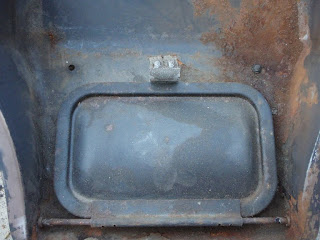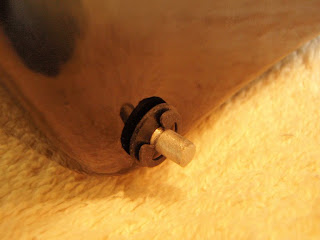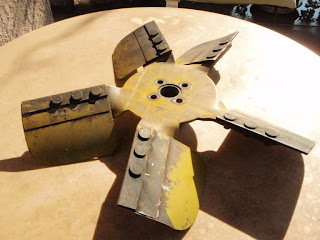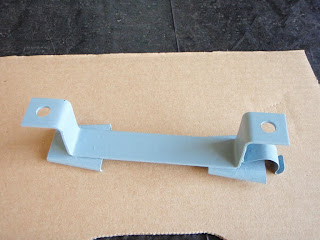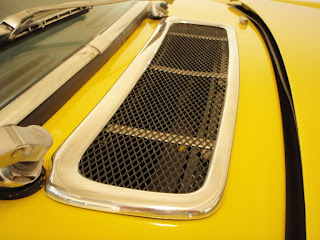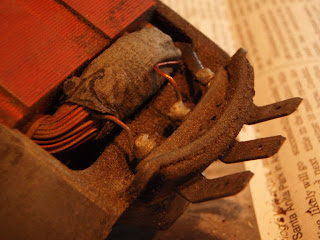I was hoping to get all of the heating and cooling components back into the engine bay this weekend, fill the system with coolant and start the engine up, but ran out of time and daylight. What did get reinstalled was the radiator, radiator fan shroud, coolant overflow bottle and mount, and the heater control valve - all with brand new mounting hardware and new hose clamps. At one point, while I was contorting my 6 foot frame under the dash to reinstall the heater control valve, I got my head stuck between the steering wheel and the shifter, and took the opportunity to remove the heater control unit and cables to have them cleaned since they were at "eye level" ... and I was waiting for the fire department to bring the "jaws of life" to dislodge me.
 |  |
To my surprise, I found that there's a little 5W light bulb that goes into the heater control housing ... bonus! I know it doesn't seem like anything to get excited about, but the only lights that work in the interior of my car are those from the instrumentation panel on the dash, and the dome lights in the rear which were designed to work manually, or automatically when the doors are opened. Well ... mine don't work when the doors are open (another future project). Manual control works, but I can count that out as it's impractical to reach over to the back seats and flip them on. Anyways, when working, this little bulb is supposed to emit green light (via a green plastic filter in the heater control housing) down on the heater controls, presumably when the headlights are on so you can see where they are in the dark. The bulb looked intact, so I just cleaned the electrical housing and electrical contacts and plugged it back in. I'm not going to get my hopes up as it obviously wasn't working before, and the problem is most likely electrical, but hey - at least I found another non-working light source to add to the collection! FYI - map light aka tiny light bulb under passenger-side dash does not work, interior dome lights don't work when doors are ajar, left & right turn signal dash indicators only blink once when engaged (is this normal?), are there any other interior lights that I don't know about?
















